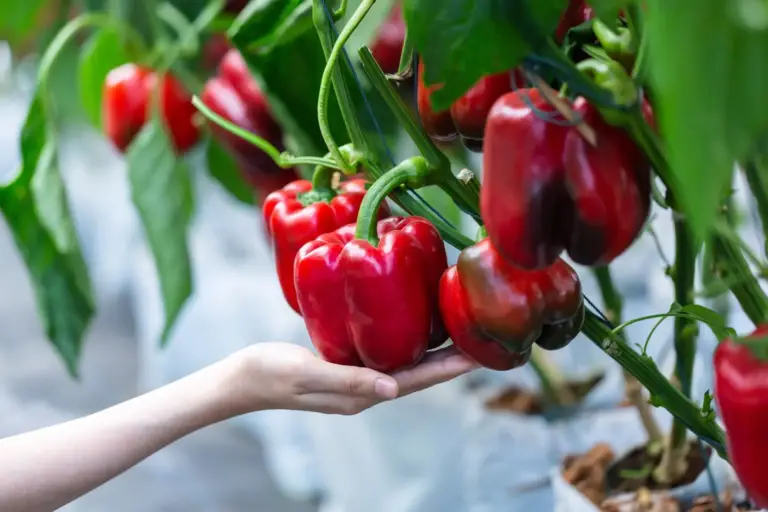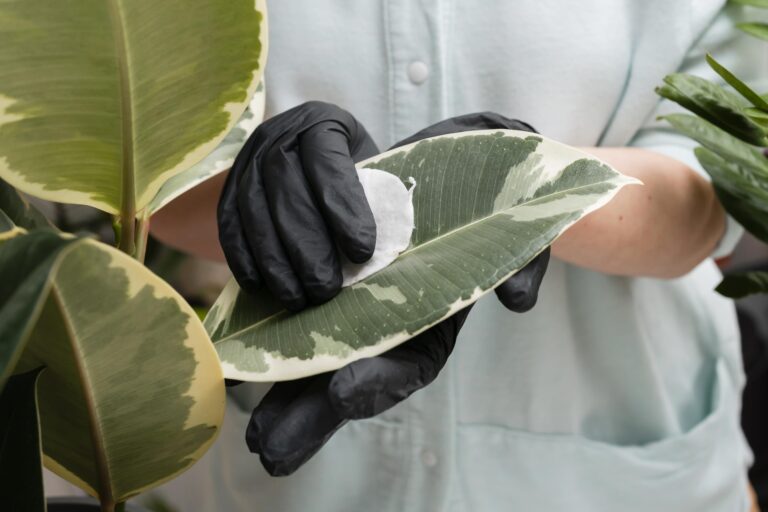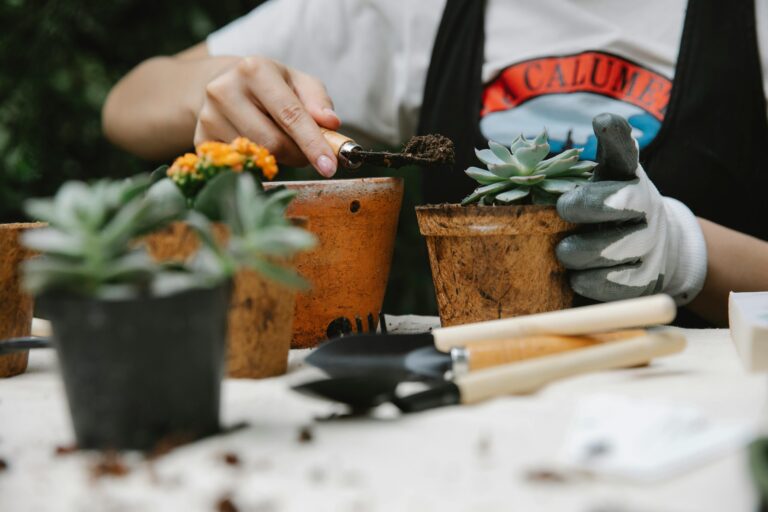Cucumber Varieties: A Guide to 40 Must-Grow Types
Table of Contents
Understanding Cucumber Basics: Exploring the Different Types
Cucumbers are a popular and versatile vegetable that is enjoyed by many. When it comes to understanding cucumber basics, it is important to explore the different types that are available. There are three main types of cucumbers: slicing cucumbers, pickling cucumbers, and burpless cucumbers.
Slicing cucumbers are the most commonly found cucumbers in grocery stores. They are usually larger and have a crisp texture, making them perfect for adding to salads, sandwiches, and snacks. On the other hand, pickling cucumbers are smaller in size and have a firm texture, which makes them ideal for pickling and preserving. Finally, burpless cucumbers are known for their mild and sweet flavor, as well as their lack of bitterness. These cucumbers are easier to digest and are a great choice for those with sensitive stomachs.
By understanding the different types of cucumbers, you can choose the right variety based on your preferences and culinary needs. Whether you enjoy a refreshing cucumber salad or a crunchy pickle, there is a cucumber type that will suit your taste buds. Stick with us as we delve deeper into the world of cucumbers, exploring their history, cultivation techniques, and health benefits.
Choosing the Right Cucumber for Your Garden
When it comes to choosing the right cucumber for your garden, there are several factors to consider. First and foremost is the type of cucumber you want to grow. There are three main types of cucumbers: slicing cucumbers, pickling cucumbers, and seedless cucumbers.
Slicing cucumbers are the most popular type and are typically used fresh in salads and sandwiches. They are usually longer and have a thicker skin compared to pickling cucumbers. Pickling cucumbers, on the other hand, are smaller and have a thinner skin, making them ideal for making homemade pickles. Lastly, seedless cucumbers are a newer variety that is becoming more popular due to their lack of seeds and less bitter taste.
Once you have decided on the type of cucumber you want to grow, it is important to consider the growing conditions in your garden. Cucumbers thrive in full sun, so choose a location that receives at least 6 to 8 hours of direct sunlight per day. In terms of soil, cucumbers prefer a well-draining soil with a pH level between 6 and 7. It is also important to provide adequate support for your cucumber plants, as they can grow quite long and heavy.
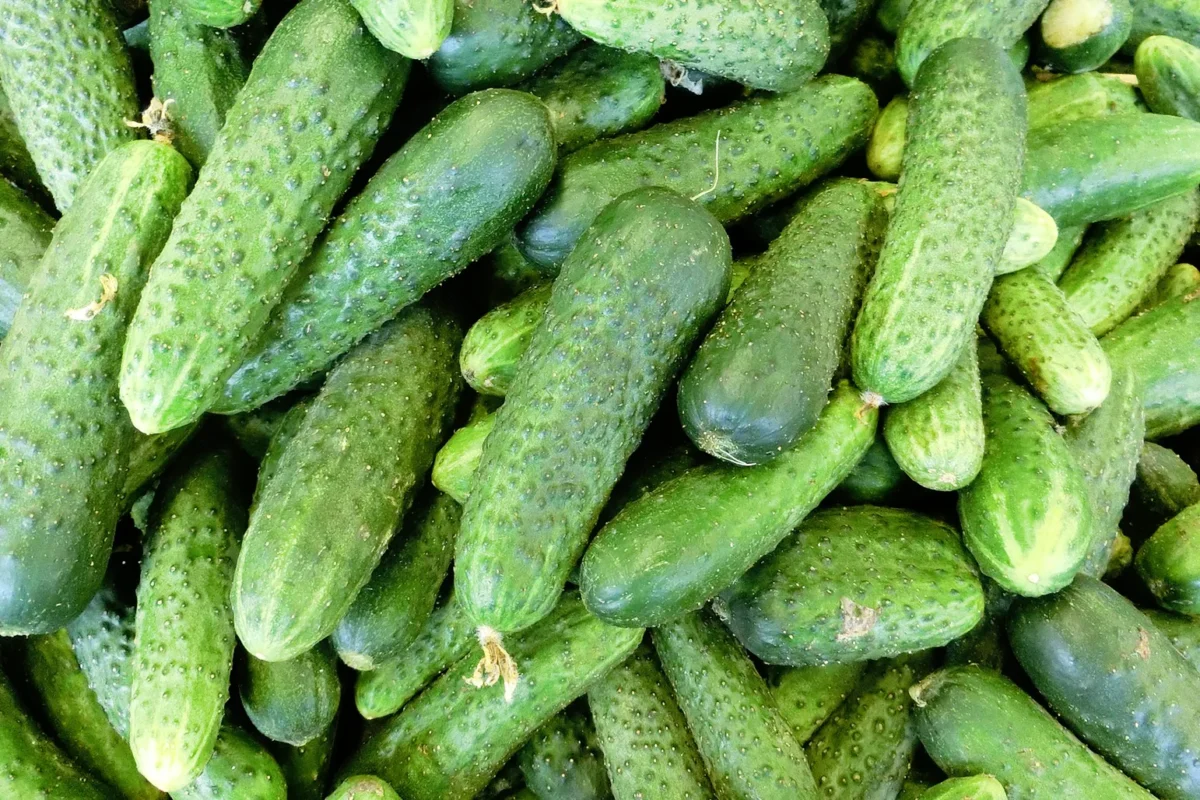
Exploring the History and Origins of Cucumbers
Cucumbers have a rich and fascinating history that dates back thousands of years. Believed to have originated in the foothills of the Himalayas in India, cucumbers have been cultivated for over 3,000 years. The earliest evidence of cucumber cultivation can be traced back to ancient Mesopotamia, where it was grown as a food source and likely used for medicinal purposes as well.
Throughout history, cucumbers have played a significant role in various cultures. The Egyptians, for instance, considered cucumbers to be a symbol of fertility and even used them as offerings in their religious ceremonies. The Romans, on the other hand, valued cucumbers for their cooling properties and used them in skincare routines. In fact, the Roman emperor Tiberius is said to have had cucumbers available year-round by growing them in a greenhouse.
Cucumbers then made their way to Europe through trade routes and became a staple in Mediterranean cuisine. It wasn’t until the 16th century that cucumbers were introduced to the Americas by European explorers. Today, cucumbers are widely consumed and cultivated all over the world, with numerous varieties and hybrids available to cater to different preferences and growing conditions.
Stay tuned for the next section where we will delve into the importance of soil and growing conditions for cucumbers. Understanding the optimal environment for cucumbers is key to successful cultivation and bountiful harvests.
The Importance of Soil and Growing Conditions for Cucumbers
Cucumbers are a popular vegetable in home gardens due to their versatility and refreshing taste. However, to ensure a thriving cucumber crop, it is crucial to understand the importance of soil and growing conditions. The right soil composition and proper environmental conditions play a significant role in the overall health and productivity of cucumber plants.
When it comes to soil, cucumbers thrive best in well-drained, fertile soil that is rich in organic matter. Sandy loam or loamy soil types are ideal for this vegetable. These soil types offer good drainage while retaining enough moisture to keep the plants hydrated. Cucumbers also prefer slightly acidic soil with a pH level between 6.0 and 7.0.
In addition to soil type, it is important to consider other growing conditions for cucumbers. These plants require full sun exposure, ideally for at least 6 to 8 hours a day. Adequate sunlight not only helps with the plants’ overall growth but also promotes fruit development. Additionally, cucumbers thrive in warm temperatures, with the optimal range falling between 70°F and 90°F (21°C to 32°C). Providing the right growing conditions sets the stage for healthy cucumber plants and a bountiful harvest.

Essential Tips for Starting Cucumber Seeds
Starting cucumber seeds is an essential step in growing healthy and productive cucumber plants. By following a few key tips, you can ensure successful seed germination and give your cucumbers the best possible start. First, select high-quality cucumber seeds from a reputable supplier. Look for varieties that are known for their disease resistance, as this will help protect your plants throughout the growing season. It’s also important to choose seeds that are well-suited to your climate and growing conditions, whether you plan to grow them in a traditional garden or in a container.
Next, prepare the seeds for planting by soaking them in water for a few hours or overnight. This can help to speed up germination and ensure that the seeds are properly hydrated. While the seeds are soaking, prepare your seed trays or pots by filling them with a high-quality seed starting mix. Make sure to dampen the mix before planting the seeds to create the ideal moisture level. Plant the seeds at a depth of about 1 inch, spacing them according to the guidelines provided on the seed packet. Cover the seeds with a thin layer of the seed starting mix and gently water them in. Place the trays or pots in a warm and well-lit location, such as on a windowsill or under grow lights, and keep the soil consistently moist. With proper care and attention, your cucumber seeds will soon sprout and begin their journey to becoming flourishing plants.
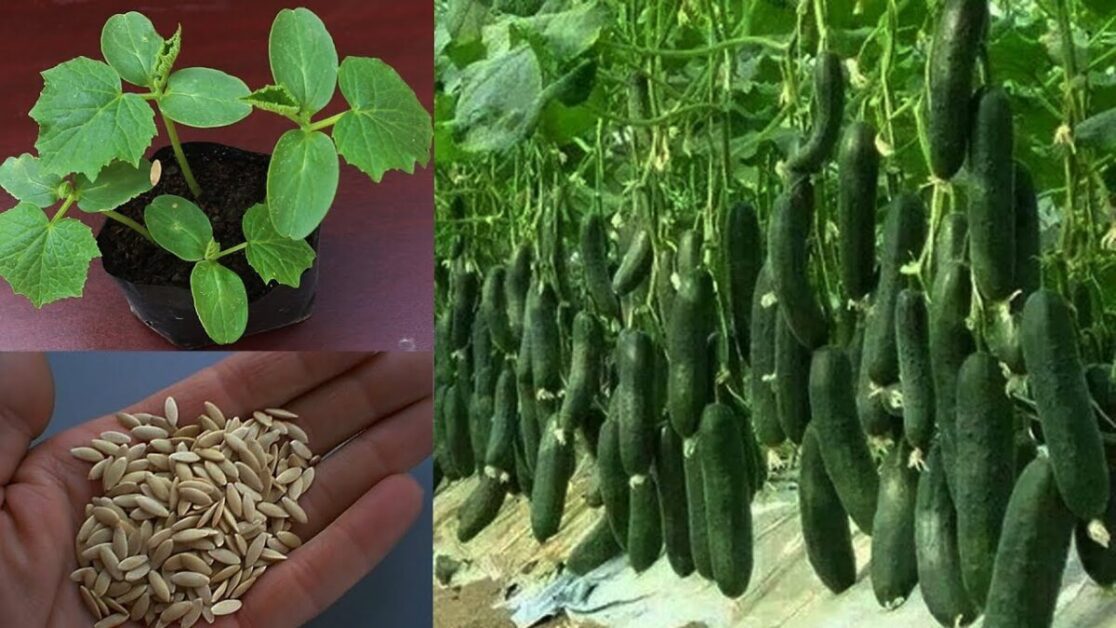
Nurturing Cucumber Seedlings: Care and Maintenance
Nurturing cucumber seedlings requires careful attention and maintenance to ensure their healthy growth and development. One crucial aspect is providing adequate lighting. Cucumber seedlings need at least 12-16 hours of direct sunlight each day. If you are growing them indoors, consider using fluorescent or LED grow lights to supplement natural sunlight. Position the lights approximately 2-3 inches above the seedlings and adjust the height as they grow to prevent leggy and weak stems.
Another important factor is maintaining proper temperature and humidity levels. Cucumber seedlings thrive in warm temperatures between 70-85°F (21-29°C). To create a suitable environment, use a heating mat under the seed trays or a small greenhouse with temperature control. In terms of humidity, ensure a level of around 50-70% to prevent drying out but avoid excessive moisture that can lead to fungal diseases. A simple way to maintain humidity is by covering the trays with a clear plastic dome or using a humidifier if growing indoors.
Regular watering is another crucial aspect of caring for cucumber seedlings. Keep the soil consistently moist but not waterlogged to prevent root rot. Water from the bottom by placing the trays in a shallow tray of water and allowing the seedlings to soak up the moisture. As the seedlings grow, gradually reduce the frequency of watering but increase the amount to encourage deeper root growth. Additionally, avoid overhead watering to minimize the risk of fungal diseases.
By providing the right amount of light, maintaining suitable temperature and humidity levels, and ensuring proper watering techniques, you can nurture cucumber seedlings and set them on the path to becoming healthy and vigorous plants. Remember, each step of care and maintenance contributes to their overall success, so it is essential to monitor and adjust these factors as needed.
Transplanting Cucumber Seedlings into the Garden
When it comes to transplanting cucumber seedlings into the garden, it is crucial to choose the right time and prepare the soil properly. Cucumber seedlings are delicate and sensitive, and they require a gentle touch during this process to ensure their successful growth and development. Before transplanting, it is important to harden off the seedlings by gradually exposing them to outdoor conditions over a period of one to two weeks. This helps them acclimate to the changes in temperature, sunlight, and wind, reducing the risk of transplant shock.
To prepare the garden soil, ensure it is well-drained and enriched with organic matter. Cucumbers thrive in loose, fertile soil that retains moisture but is not waterlogged. It is beneficial to amend the soil with compost or well-rotted manure to provide essential nutrients. Before transplanting, create planting holes that are deep enough to accommodate the roots of the seedlings. Spacing between the plants is also important, as overcrowding can lead to poor air circulation and increased susceptibility to diseases. Allow a spacing of about 12 to 24 inches between cucumber plants, depending on the variety. In addition, installing trellises or stakes can provide support for the vines as they grow, preventing damage and allowing for easier harvesting.
By following these guidelines, you can establish a strong foundation for your cucumber seedlings and ensure their successful growth in the garden. However, it is essential to remember that each variety might have its own specific requirements, so it is wise to consult the seed packet or trusted gardening resources for variety-specific information. With proper care, attention, and favorable growing conditions, your cucumber plants will flourish and reward you with a bountiful harvest in no time.
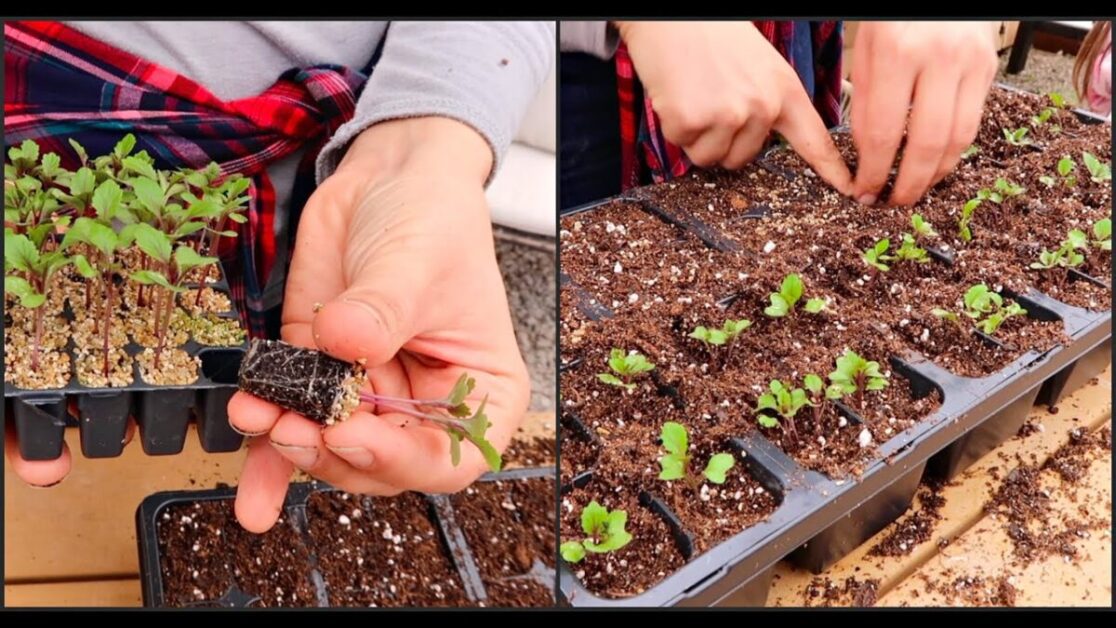
The Art of Properly Watering Cucumber Plants
Proper watering is crucial for the healthy growth and development of cucumber plants. Cucumbers, like many other vegetables, require consistent and adequate moisture to thrive. However, it’s important to strike a balance and avoid overwatering, as this can lead to root rot and other fungal diseases.
The first step in proper watering is to ensure that the soil is well-draining. Cucumbers prefer slightly moist soil, but they don’t tolerate standing water. Therefore, it’s essential to choose a location with good drainage, or consider raised beds or containers if your soil is heavy or compacted. Additionally, adding organic matter such as compost or peat moss to the soil can improve its water-holding capacity.
When it comes to the frequency of watering, it’s best to water cucumber plants deeply and infrequently rather than shallowly and frequently. This encourages the roots to grow deeper in search of moisture, making the plants more resilient and less dependent on constant irrigation. It’s advisable to water the plants thoroughly and then allow the soil to dry out slightly before watering again. Keep an eye on the soil moisture by testing it with your finger or using a moisture meter to ensure that it remains consistently moist but not waterlogged.
Another important aspect of watering cucumbers is timing. It’s best to water early in the morning to give the plants ample time to dry out before evening. This helps prevent disease development, as wet foliage can create favorable conditions for fungal infections. By avoiding overhead watering and focusing on soil irrigation, you can minimize the chances of disease and promote healthier plants.
In the next section, we will explore the nutrient needs of cucumbers and the significance of proper fertilization for their growth and productivity.
Fertilizing Cucumbers: Nutrient Needs and Timing
When it comes to fertilizing cucumbers, understanding their nutrient needs and timing is crucial for their optimal growth and productivity. Cucumbers are heavy feeders, meaning they require a steady supply of nutrients throughout their growing season. The three main nutrients cucumbers need are nitrogen (N), phosphorus (P), and potassium (K), also known as NPK.
In the early stages of cucumber growth, nitrogen is especially important as it promotes vigorous leaf and stem development. A nitrogen-rich fertilizer, such as a balanced NPK fertilizer with a higher N content, can be applied when the plants have reached a height of about six inches. As the plants continue to grow and begin flowering, a fertilizer with a balanced NPK ratio can be used to provide sufficient nutrients for both foliage and fruit development. It is important to follow the recommended application rates and timing provided by the fertilizer manufacturer to avoid over or under-fertilization. Additionally, a soil test conducted before planting can help determine any specific nutrient deficiencies or imbalances that may need to be addressed with targeted fertilization.
Protecting Cucumber Plants from Pests and Diseases
To protect cucumber plants from pests and diseases, it is essential to implement proper preventive measures and take timely action. Pests such as aphids, cucumber beetles, and spider mites can cause significant damage to cucumber plants, while diseases like powdery mildew and bacterial wilt can quickly spread and affect the overall health of the crop.
One effective strategy to ward off pests is to use floating row covers, which act as a physical barrier, preventing insects from accessing the plants. Additionally, implementing companion planting can help deter pests. For example, planting marigolds or nasturtiums near cucumber plants can repel aphids and cucumber beetles. Regular inspection and removal of any visible pests by hand can also help minimize their presence.
When it comes to diseases, maintaining proper air circulation and reducing humidity levels are crucial. Watering the plants at the base and during the early morning hours can minimize moisture on the foliage and lower the risk of powdery mildew development. Crop rotation is also essential to prevent the buildup of soil-borne diseases. By moving cucumber plants to different areas of the garden each year, you can disrupt disease cycles and reduce the chance of infection.
Implementing these preventive measures and being vigilant in monitoring the health of your cucumber plants will go a long way in protecting them from pests and diseases. However, it is important to remember that prevention is key, and early intervention is necessary if any issues arise. Stay tuned for more tips and advice on maintaining a thriving cucumber garden.
Pruning and Training Cucumber Vines for Optimal Growth
Pruning and training cucumber vines is essential for promoting optimal growth and maximizing yield in your garden. By properly managing the growth and direction of the vines, you can encourage better airflow, sunlight penetration, and fruit development.
When it comes to pruning cucumber vines, the goal is to remove excessive foliage and redirect the plant’s energy towards producing more cucumbers. Start by removing any yellow or damaged leaves, as these can sap nutrients from the rest of the plant. Additionally, prune away any tendrils that may be wrapping around other plants or structures, as these can hinder the cucumber’s growth and cause it to become entangled.
As the cucumbers grow, it is important to provide adequate support by training the vines along trellises or stakes. This not only helps to keep the fruit off the ground, avoiding rot and pest infestations, but also allows for better air circulation, reducing the risk of fungal diseases. Gently guide the vines as they grow by tying them to the support structure with soft plant ties or twine, being careful not to constrict their growth. Regularly check the ties and adjust as necessary to accommodate the expanding vines.
Remember, while pruning and training cucumber vines is beneficial, it is important not to over-prune or remove too much foliage. The leaves play a vital role in photosynthesis, converting sunlight into energy that the plant needs to grow and produce cucumbers. Striking a balance between removing excessive foliage and ensuring adequate leaf coverage is crucial for achieving optimal growth and a bountiful cucumber harvest.
Harvesting Cucumbers: Determining the Right Time
Determining the right time to harvest cucumbers is crucial in ensuring that you enjoy the best flavor and texture from your home-grown produce. While it may be tempting to pluck them from the vine as soon as they reach a decent size, it is important to exercise patience and let them mature fully.
One key factor to consider when harvesting cucumbers is their size. Most cucumber varieties are ready to be picked when they reach a length of approximately 6 to 8 inches. At this stage, they are usually crisp, firm, and bursting with flavor. However, different cucumber types may have varying size recommendations, so it is vital to check the seed packet or consult reliable gardening resources to determine the ideal size for your particular variety.
Another important consideration is the color of the cucumber’s skin. Depending on the cultivar, cucumbers can come in various shades, including dark green, light green, yellow, or even white. As they mature, cucumbers tend to develop a rich, vibrant color that is characteristic of their particular variety. So, when harvesting, be sure to choose cucumbers that have attained their distinct coloration, as this indicates that they are fully ripe and ready for picking.
Determining the right time to harvest cucumbers may seem like a challenge, especially to novice gardeners. However, by paying attention to the size and color of the cucumbers, you can ensure that you harvest them at the peak of their flavor and enjoy a bountiful yield from your garden. So, resist the urge to pick them prematurely and savor the rewards of patience and meticulous attention to detail.
Preserving and Storing Cucumbers for Longevity
Preserving and storing cucumbers properly is essential if you want to prolong their shelf life and enjoy their crunchy goodness long after the harvest season. The key to preserving cucumbers lies in maintaining their freshness, crispness, and optimum flavor. One of the most common methods is pickling, which involves brining cucumbers in a vinegar-based solution along with various herbs and spices.
To ensure successful preservation, start by choosing cucumbers that are firm, without any soft spots or blemishes. Small to medium-sized cucumbers are ideal for pickling, as they have a higher concentration of flavor compounds. Before pickling, wash the cucumbers thoroughly and remove the blossom end, as it contains enzymes that can lead to softening. If you prefer a crispier pickle, you can soak the cucumbers in an ice water bath for a couple of hours before beginning the pickling process.
Once the cucumbers are cleaned and prepped, you can begin the pickling process. There are various recipes available, allowing you to experiment with flavors and find your personal preference. Some popular options include dill pickles, bread and butter pickles, and sweet pickles. Regardless of the recipe you choose, it’s important to follow proper canning techniques to prevent spoilage and ensure safety.
Aside from pickling, cucumbers can also be stored in the refrigerator to maintain their freshness. Before refrigerating, make sure to wrap them tightly in plastic wrap or place them in an airtight container to prevent moisture loss. Cucumbers can stay fresh in the refrigerator for up to one week, but their quality may decline over time.
Preserving and storing cucumbers is not only a practical way to enjoy them throughout the year but also a great opportunity to explore different flavor profiles through pickling. Whether you’re a fan of tangy dill pickles or sweet bread and butter pickles, experimenting with different recipes and methods can add a delightful twist to your culinary adventures. Next time you have an abundant cucumber harvest, consider preserving and storing them to savor their crunchy goodness for months to come.
Creative Culinary Uses for Different Cucumber Varieties
Cucumbers are not only a refreshing addition to summer salads but also a versatile ingredient that can be used in a variety of creative culinary ways. With different cucumber varieties available, each one offers its own unique taste, texture, and flavor profile, opening up a world of possibilities in the kitchen.
One popular cucumber variety, the English cucumber, is known for its crisp texture and delicate taste. This cucumber works wonderfully in salads, sandwiches, and gazpachos, adding a refreshing crunch to any dish. Its thin skin requires no peeling, making it convenient for quick and easy recipes.
Another interesting cucumber variety to explore is the Persian cucumber. This smaller cucumber boasts a sweet and mild flavor, making it a perfect choice for pickling or marinating. Thinly sliced Persian cucumbers can also be used as a topping for sushi rolls or added to wraps for a tasty crunch. With its vibrant green color, this cucumber adds a visually appealing touch to any dish.
Whether you are a culinary enthusiast or simply looking to experiment with flavors in your kitchen, consider incorporating different cucumber varieties into your recipes. The wide range of textures and flavors they offer can elevate your dishes and bring a refreshing twist to your culinary creations. So, next time you’re at the grocery store or planning your garden, don’t forget to explore the enticing world of cucumber varieties and let your creativity thrive in the kitchen.
Certainly! Here’s a table highlighting creative culinary uses for various cucumber varieties:
| Cucumber Variety | Creative Culinary Uses |
|---|---|
| English Cucumber | – Slice and add to sangria with white wine, mint, and green grapes. <br> – Make cucumber popsicles with lime juice and chili. <br> – Create a refreshing cucumber sorbet. |
| Persian Cucumber | – Thinly slice or match-stick-slice for Asian-style salads with seaweed flakes, rice vinegar, sesame oil, and toasted sesame. <br> – Toss with shredded shiso leaves, umeboshi (sour plums), and soy sauce. |
| Kirby Cucumber | – Prepare a Malay cucumber and pineapple salad with vinegar, sugar, and chilies. <br> – Slice into long ribbons and dress lightly with rice vinegar and neutral-flavored oil. |
| White Cucumber | – Use in non-food applications: apply slices on puffy or tired eyes, make cucumber facial masks, or use as shoe polish, WD-40 replacement, defogger, or pest control. |
Remember to choose cucumbers that are firm, evenly colored, and free from bitterness.
Exploring the Health Benefits of Cucumbers
Cucumbers are not only a refreshing addition to salads and sandwiches, but they also offer a multitude of health benefits. With their high water content and low-calorie profile, cucumbers make for a guilt-free snack that can aid in weight management. Moreover, their crunchy texture can help stimulate saliva production, aiding in digestion.
But the health benefits of cucumbers go beyond their hydrating properties. These versatile vegetables are rich in vitamins, minerals, and antioxidants, making them a valuable addition to a balanced diet. Cucumbers are particularly abundant in vitamin K, which plays a crucial role in blood clotting and bone health. Additionally, they contain vitamin C, which supports the immune system, and vitamin A, which promotes healthy skin and eyesight.
Furthermore, cucumbers are a great source of dietary fiber, promoting regular digestion and helping to prevent constipation. Their high water content also contributes to maintaining hydration levels and supporting kidney function. Research suggests that cucumbers may even help lower blood sugar levels, making them a suitable option for individuals with diabetes.
Incorporating cucumbers into your diet is a simple and delicious way to enhance your overall health. Whether enjoyed in salads, soups, or as a refreshing snack, these vegetables provide a multitude of nutrients that can contribute to your well-being.
Certainly! Here’s a table highlighting the health benefits of cucumbers:
| Health Benefit | Description |
|---|---|
| Hydration Boost | Cucumbers are 95% water, making them excellent for hydration. They can hydrate twice as effectively as plain water due to minerals like potassium and vitamins, especially vitamin K. Staying hydrated is crucial for overall health. |
| Weight Management | If you’re aiming for weight loss, cucumbers are your allies. They are low in calories but filling. Their high water and fiber content means you can snack on cucumbers without worrying about excessive calorie intake. |
| Blood Sugar Regulation | For individuals managing blood sugar levels (such as those with diabetes), cucumbers are beneficial. Being non-starchy vegetables, they won’t cause significant blood sugar spikes. Their fiber content helps control appetite and prevents sudden surges in blood sugar. |
| Digestive Health | Rich in fiber and water, cucumbers promote regular bowel movements. The bulk from fiber ensures smooth digestion. |
| Antioxidant Properties | Cucumbers contain flavonoids and tannins, powerful antioxidants that block harmful free radicals. These compounds contribute to reducing the risk of chronic illnesses . |
Remember to enjoy cucumbers with their peel to maximize nutrient intake!
Troubleshooting Common Issues in Cucumber Cultivation
Cucumbers are generally easy to grow, but they can still encounter some common issues that gardeners may need to troubleshoot. One issue that gardeners may face is poor fruit set, where the cucumber plants flower but fail to produce any fruit. This can be caused by a few different factors, such as excessively high temperatures or lack of pollination. To address this issue, it is important to provide adequate shade during extreme heat, and to attract pollinators to the garden by planting flowers nearby or using pollinator-attracting techniques like companion planting.
Another common issue in cucumber cultivation is yellowing leaves. This can occur for various reasons, including nutrient deficiencies, pests, or diseases. If nutrient deficiencies are suspected, soil testing can help determine which nutrients are lacking and allow for targeted fertilization. Pests such as aphids or spider mites may also cause yellowing leaves, and it is important to identify and address these issues promptly, using natural or organic pest control methods whenever possible. Additionally, some cucumber diseases, like downy mildew or bacterial wilt, can cause leaf yellowing and wilting. If disease is suspected, it is best to consult with a local extension service or plant disease expert to diagnose and treat the issue effectively. By identifying and addressing these common issues, gardeners can ensure a successful cucumber harvest.
For more information watch the below video.
Why are my cucumber plants turning yellow?
Yellowing leaves on cucumber plants can be caused by a variety of factors, including nutrient deficiencies, overwatering, or pest infestation. It is important to assess the overall health of the plant and address any underlying issues to prevent further damage.
How can I prevent cucumber plants from getting powdery mildew?
Powdery mildew is a common fungal disease that affects cucumber plants. To prevent its occurrence, ensure proper air circulation by spacing plants adequately, avoid overhead watering, and apply fungicides specifically designed for powdery mildew control as a preventive measure.
What should I do if my cucumber plants are being attacked by pests?
If you notice pest infestations on your cucumber plants, such as aphids or cucumber beetles, there are several steps you can take. Start by manually removing pests from the plants, encourage beneficial insects like ladybugs, and consider using organic insecticides or insecticidal soaps as a last resort.
Why are my cucumber fruits deformed?
Deformed cucumber fruits can be caused by irregular pollination, poor growing conditions, or genetic factors. Ensure that the plants have access to adequate pollinators, maintain consistent watering and fertilization, and choose cucumber varieties known for producing uniformly shaped fruits.
How can I prevent cucumber plants from overgrowing and taking up too much space?
To prevent cucumber plants from taking up excessive garden space, you can utilize trellises or vertical supports to train the vines to grow upward. This not only saves space but also improves air circulation, reduces the risk of diseases, and makes harvesting easier.
What is the best way to store freshly harvested cucumbers?
Freshly harvested cucumbers are best stored in the refrigerator to maintain their crispness and freshness. Before storing, rinse the cucumbers, pat them dry, and place them in a plastic bag or airtight container to prevent moisture loss.
Can I grow cucumbers indoors?
Yes, cucumbers can be grown indoors, provided they receive sufficient sunlight or artificial grow lights. Choose compact or dwarf cucumber varieties suitable for container gardening and ensure proper drainage for the pots or containers.
How often should I water my cucumber plants?
Cucumber plants require consistent moisture, so it is important to water them regularly, especially during hot and dry periods. Aim to keep the soil evenly moist, but not waterlogged, and avoid overhead watering to minimize the risk of fungal diseases.
Can I save cucumber seeds for future planting?
Yes, cucumber seeds can be saved for future planting. To save seeds, allow a few cucumbers to fully ripen on the vine until they turn yellow and develop a slightly shriveled skin. Scoop out the seeds, rinse off the pulp, and dry them thoroughly before storing in a cool, dry place.
Are cucumber plants prone to any specific diseases?
Yes, cucumber plants are susceptible to various diseases, including powdery mildew, downy mildew, bacterial wilt, and cucumber mosaic virus. It is important to implement preventive measures, such as proper sanitation, crop rotation, and choosing disease-resistant cucumber varieties, to minimize the risk of these diseases.

Nicole Burke is a dynamic writer at SouthElMonteHydroponics, fueled by her passion for horticulture and environmental sustainability. Armed with a degree in Environmental Science from a renowned institution, Nicole’s expertise lies in hydroponic gardening, organic farming, and biodiversity conservation. Her insatiable curiosity and love for nature drive her to explore innovative techniques in hydroponics, seeking to revolutionize the way we grow crops in urban environments. Nicole’s writing reflects her deep commitment to promoting eco-conscious practices and fostering a deeper connection between humans and the natural world. Through her engaging storytelling, she inspires others to embrace sustainable living and harness the power of hydroponics for a greener future.

